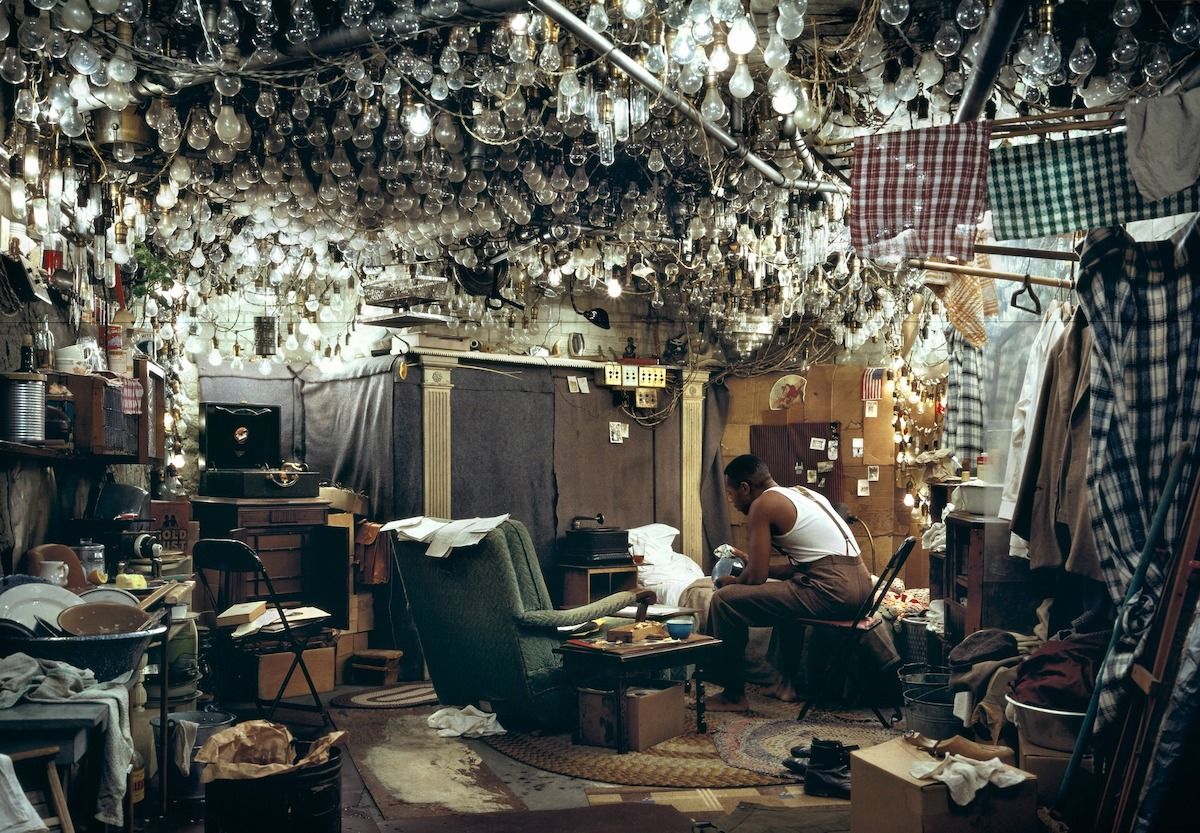
I quite like the work of Jeff Wall so it was a great pleasure to see 70 of his photographs together in one exhibition. The Schaulager has done well to give almost all of the larger works a wall of their own. I wish more museums would follow this example to give some works space to "breathe", that is to say, to allow the visitor an unperturbed look at the work.
Jeff Wall exhibits his photographs as large format transparencies mounted in light boxes. They are similar if not identical to the wall advertisements that you sometimes see at airports. When I say large I mean large: some are 2 by 3 meter or even bigger. Of course, most billboards are even larger, but Jeff Wall was one of the first artists to experiment with the scale of a photograph. Today many photographers blow up their photos to huge scales, - think Andreas Gursky, Thomas Ruff etc - so this type of monumental photography has become a bit of a cliché, but when you've seen a work by Jeff Wall in a book, as a postcard or on-line and then see the work at its original, intended scale you realize that sometimes size does matter. Of course, the light also makes a difference: the original photos are lit from behind, whereas prints reflect light. I could go into the physics here, but it is an effect you have to see for yourself.
(If you are going to see the exhibition, try a little experiment and FIRST buy some of the postcards that you like and THEN compare them with the original work in the exhibition, or alternatively, instead of leaving, go back one more time after you've bought the postcards.)
Jeff Wall is one of the darlings of art critics and art/media students. His work draws extensively on the history of art and the language of cinema. His photos are all carefully composed and some of them are not only staged, but digitally synthesized from different photos. In some photos, such as "The Giant", this is obvious, other photos are so subtle and so perfectly composed that you believe what you see, even though a slight sense of doubt, - "How did he do that?" - still gnaws at the back of your mind.
The scenes in his staged photographs often imply larger narratives and these are also the ones I like best. You wonder what went before and what comes after, where people come from and where they are going. You wonder what they are thinking of and if and why and if not then what.
By the way, Jeff Wall started out in academia, he holds a PhD in art history, and for several years was an Associate Professor at the Center for the Arts at Simon Fraser University in Vancouver. He is also the author of various essays on art. So you see, I'm not the only one.
Jeff Wall: Photographs 1978-2004 is an excellent retrospective. There's one thing I didn't understand though, and that is why Jeff Wall agreed to have one of the best works in the exhibition, the stunning "After Invisible Man by Ralph Ellison, the Prologue" (1999-2001), cut in half and used as the exhibition poster. To put so much effort into honing every detail and to then cut off half the photo, reducing it to a mere image, to me seems inconsistent. I mean, he could also have made a photo at the right format especially for the exhibition poster.
Jeff Wall: Photographs 1978-2004 is at the Schaulager, Basel until 25 September 2005.